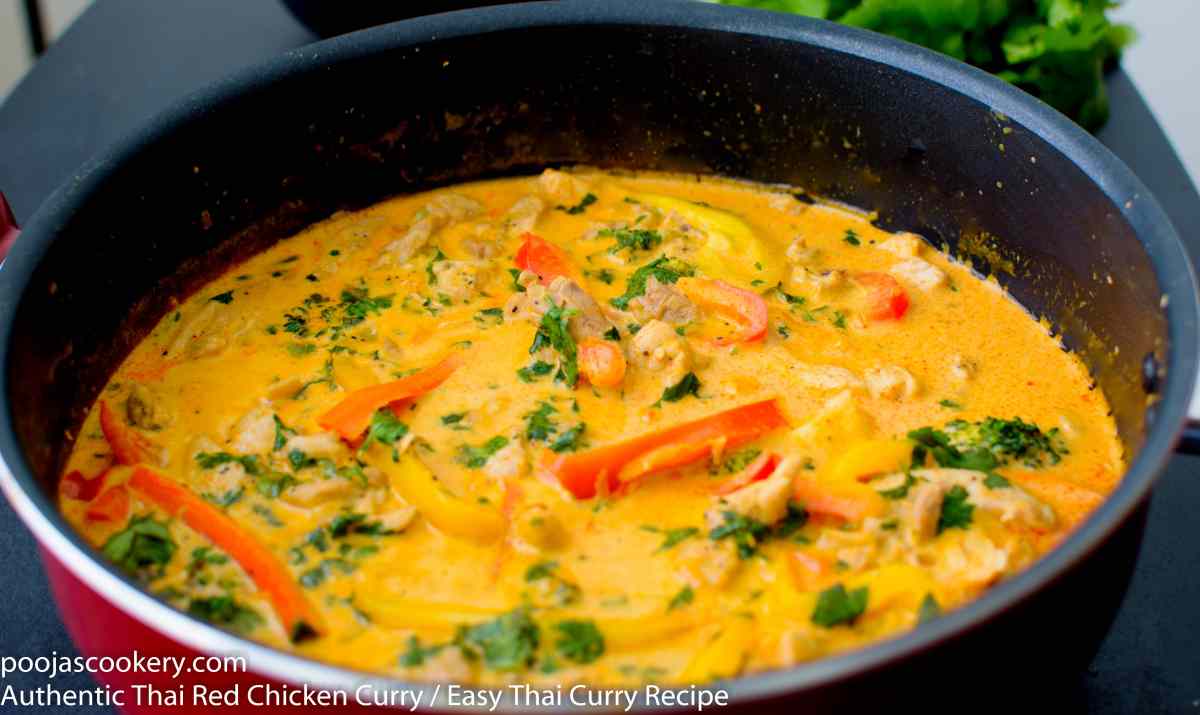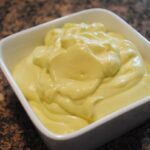Embark on a culinary adventure into the vibrant world of Thai cuisine, even if eggs are off the menu! This guide unveils the secrets to crafting authentic, egg-free Thai curries—red, green, and yellow—right in your own kitchen. Discover the unique flavor profiles of each curry, learn essential ingredient substitutions, and master the art of creating a perfectly balanced, aromatic dish that rivals any restaurant.
From understanding the nuances of traditional Thai curry pastes to exploring creative serving suggestions and variations, this comprehensive guide empowers you to create delicious, flavorful, and egg-free Thai curries that will tantalize your taste buds and impress your guests. We’ll delve into the heart of Thai cooking, revealing the secrets to achieving that perfect balance of sweet, sour, salty, spicy, and savory, all without compromising on authenticity or taste.
Essential Ingredients and Substitutes

Creating authentic-tasting egg-free Thai curries hinges on understanding the role each ingredient plays. While some ingredients contribute primarily to flavor, others are crucial for achieving the desired creamy texture and vibrant color. Mastering these fundamentals will elevate your home-cooked Thai curries to a new level.
The following section details essential ingredients for egg-free Thai curries, along with viable substitutes. Remember, while substitutions can work, using high-quality ingredients whenever possible will always yield the best results.
Essential Ingredients and Their Roles
The foundation of any great Thai curry, regardless of whether it’s egg-free, lies in a careful selection of key ingredients. These ingredients work synergistically to create the complex and nuanced flavor profiles that characterize Thai cuisine. Each ingredient contributes unique characteristics to the overall taste and texture.
- Coconut Milk: Provides richness and creaminess. Its fat content contributes to the luscious texture of the curry.
- Thai Curry Paste: The heart of the curry, providing the base flavor profile. Different pastes (red, green, yellow, massaman) offer distinct flavor profiles.
- Fish Sauce (or Vegetarian Alternative): Adds umami depth and salinity. It’s crucial for balancing the sweetness and spice of the curry.
- Vegetables: Contribute texture, color, and additional flavors. Common choices include bell peppers, bamboo shoots, eggplant, and green beans.
- Protein (optional): Adds substance and protein. Choices range from tofu and tempeh to chicken, beef, or seafood.
- Lime Juice: Adds brightness and acidity, balancing the richness of the coconut milk and the intensity of the spices.
- Sugar (palm sugar preferred): Balances the savory and spicy elements, adding a subtle sweetness that complements the other flavors.
Ingredient Substitutions
While the ideal scenario involves using high-quality ingredients, substitutions can be necessary or simply preferred based on availability or dietary restrictions. The following substitutions offer viable alternatives, though they may slightly alter the final flavor profile.
- Coconut Milk:
- Alternative 1: Full-fat coconut cream: Offers a richer, thicker texture than coconut milk.
- Alternative 2: Cashew cream (soaked cashews blended with water): Creates a creamy, slightly nutty flavor. May require more seasoning to match the richness of coconut milk.
- Alternative 3: Silken tofu blended with water: Provides a lighter, less rich creaminess. Expect a less pronounced coconut flavor.
- Thai Curry Paste:
- Alternative 1: Homemade curry paste: Allows for precise control over ingredients and spice levels.
- Alternative 2: A blend of individual spices (turmeric, lemongrass, galangal, chilies, etc.): Requires careful measurement and blending to achieve a similar flavor profile.
- Alternative 3: Substituting with a different curry paste (e.g., using red curry paste instead of green): Will significantly alter the flavor profile, resulting in a different style of curry.
- Fish Sauce:
- Alternative 1: Soy sauce: Offers a salty umami flavor, but lacks the complexity of fish sauce.
- Alternative 2: Mushroom soy sauce: Adds a deeper umami flavor profile.
- Alternative 3: Liquid aminos: Provides a similar salty umami taste but with a slightly different flavor profile.
Sourcing High-Quality Ingredients
The quality of your ingredients directly impacts the final flavor of your egg-free Thai curry. Sourcing high-quality ingredients ensures a more vibrant, nuanced, and ultimately more satisfying culinary experience. This is particularly true for the curry paste and coconut milk, which form the base of the dish. A good quality coconut milk will have a noticeably richer flavor and creamier texture compared to a lower-quality option. Similarly, a freshly made or high-quality store-bought curry paste will exhibit a far more complex and aromatic flavor than a mass-produced, less flavorful alternative.
Troubleshooting and Tips
Creating delicious egg-free Thai curries requires attention to detail, but even experienced cooks can encounter minor setbacks. Understanding common problems and implementing simple solutions can significantly improve your results, leading to vibrant, flavorful dishes that rival those made with eggs. This section will address common issues and offer practical tips for achieving curry perfection.
Common Problems and Solutions
Addressing common issues is crucial for achieving consistent success in egg-free Thai curry preparation. The following table Artikels three frequent problems and their corresponding solutions, enabling you to troubleshoot effectively and produce delectable curries every time.
| Problem | Solution |
|---|---|
| Curry is too thin | Simmer the curry uncovered for a longer period to reduce the sauce’s liquid content. Alternatively, incorporate a cornstarch slurry (1 tablespoon cornstarch mixed with 2 tablespoons of cold water) to thicken the curry gently. Stir continuously to avoid lumps. |
| Curry lacks depth of flavor | Ensure you are using high-quality ingredients, particularly the curry paste. Allow the aromatics (onions, garlic, ginger) to sauté properly before adding other ingredients to develop their full flavor profile. Consider adding a touch of fish sauce or soy sauce (depending on the curry type) to enhance the umami notes. A squeeze of lime juice at the end brightens the flavors. |
| Vegetables are overcooked or undercooked | Add firmer vegetables like carrots or potatoes earlier in the cooking process, allowing them to soften fully. Delicate vegetables like spinach or beansprouts should be added towards the end to prevent overcooking and retain their vibrant color and crisp texture. Using a timer helps to maintain the desired level of doneness. |
Tips for Optimizing Flavor and Texture
Optimizing flavor and texture is key to creating truly exceptional egg-free Thai curries. These five tips will guide you towards achieving a harmonious balance of tastes and textures.
- Toasting the spices: Before adding them to the oil, briefly toasting the curry paste in a dry pan intensifies their aroma and flavor, creating a richer, more complex taste. Imagine the fragrant spices releasing their essence, filling your kitchen with an enticing aroma.
- Balancing sweetness and spiciness: Adjust the sweetness and spiciness levels to your preference. Start with a smaller amount of sugar or chili flakes and add more gradually until you achieve the desired balance. This allows for precise control over the final taste.
- Using fresh ingredients: Opt for the freshest ingredients possible. The vibrant flavors of fresh herbs, vegetables, and aromatics significantly elevate the overall taste of the curry. Picture vibrant green cilantro and fragrant kaffir lime leaves adding a burst of freshness to your dish.
- Adding coconut milk gradually: Incorporate coconut milk in stages to control the consistency and richness of the curry. Adding it all at once might result in a thinner curry. Visualize the creamy coconut milk gradually thickening the sauce, creating a luxurious texture.
- Garnishing appropriately: Fresh herbs like cilantro and basil, a squeeze of lime juice, and toasted coconut flakes enhance the visual appeal and add a final touch of flavor complexity. Imagine the vibrant green herbs contrasting beautifully with the rich curry, adding a final flourish to your culinary creation.
Storing and Reheating Leftovers
Proper storage and reheating are essential to maintain the quality of your egg-free Thai curry.
Allow the curry to cool completely before transferring it to an airtight container. Store it in the refrigerator for up to three days. To reheat, gently warm it in a saucepan over low heat, stirring occasionally to prevent sticking. Avoid high heat, which can cause the curry to become watery or separate. Alternatively, you can reheat individual portions in the microwave, but be mindful of potential spattering.
Mastering the art of egg-free Thai curries opens a world of culinary possibilities. With a little practice and the knowledge shared in this guide, you’ll be creating restaurant-quality dishes that are both delicious and adaptable to your preferences. So, gather your ingredients, embrace the vibrant spices, and prepare to delight your senses with the rich tapestry of flavors that only authentic Thai curry can offer. The journey to culinary mastery begins here!
FAQ Explained
Can I make the curry paste ahead of time?
Yes! Curry paste can be made several days in advance and stored in an airtight container in the refrigerator. The flavors will actually deepen over time.
What if my curry is too spicy?
Add a dollop of coconut milk or a squeeze of lime juice to reduce the heat. A spoonful of sugar or honey can also help balance the spice.
How long can I store leftover curry?
Store leftover curry in an airtight container in the refrigerator for up to 3-4 days. Reheat gently on the stovetop or in the microwave.
Are there any other egg replacements besides the ones mentioned?
While the guide provides excellent alternatives, you can explore using things like silken tofu blended smoothly for a creamy texture in some applications.
Can I use pre-made curry paste?
Absolutely! Using a pre-made paste saves time, but making your own allows for greater control over spice levels and ingredients.


